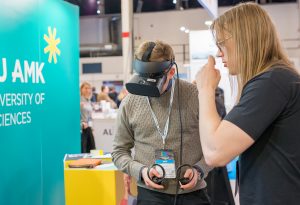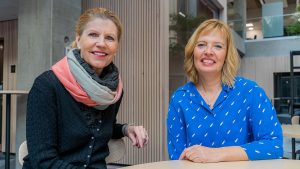VR-teknologialla mahdollistetaan harjoittelutilanteita merenkulkuun, paloturvallisuuteen, logistiikkaan, metsätalouteen ja jopa terveydenhuoltoon. Kuvittele tilanne: olet saapunut työhaastatteluun. Odotellessasi haastattelijaa paikalle palohälytin alkaa…
Tekijät | Authors
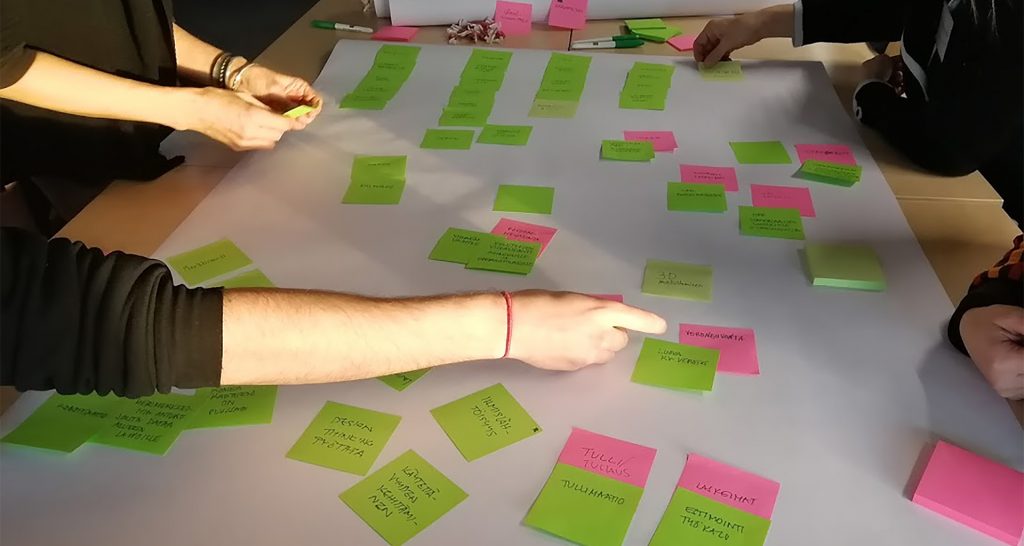
Working life and RDI commissions as a source of learning
This paper describes linking courses in the field of media at Turku UAS with a research, development and innovation project, titled the IRM-Tool.
At Universities of Applied Sciences, it is important to combine working life and learning, and working life oriented projects are one of the useful ways of bringing working life into the everyday learning and teaching.
Several learning theories suggest that learning is motivating and efficient when realized in co-operation with working life. However, commissioning processes connected to working life require mutual adapting and dialogue between commissioners, professors and students and longer planning periods and extra work can be needed.
To create a basis for connecting RDI-projects and commissioning processes, we want to introduce two suitable learning theories to underpin our activities with them. Therefore, we will describe authentic learning and problem-based learning in the subsequent pages.
Furthermore, we will weigh these theories against our commissioning processes and suggest some good practices when combining RDI projects and learning and teaching. As an empirical case we will introduce the IRM-Tool project in which teaching, learning and RDI were strongly connected.
Introduction
To respond to the claims of the changing and demanding working life, an active and student-centred learning approach is needed. This need is well acknowledged in innovation pedagogy, which aims to educate students to become experts in their future positions (Scheinin & Konst, 2019).
Turku University of Applied Sciences has developed a strategic approach to learning, innovation pedagogy, which emphasizes that in addition to subject-specific competences, the students benefit from innovation competences. Konst & Kairisto-Mertanen (2018) suggest that with innovation competences, the students will succeed in both, work and life.
According to innovation pedagogy, the whole learning process should be planned and implemented the way that both, innovation competences and study field specific competences, are reached. Innovation pedagogy emphasizes that education should not happen in an educational vacuum but in strong connection with the surrounding world (Konst & Kairisto-Mertanen, 2018).
Innovation pedagogy is closely connected to several pedagogical models such as authentic learning and problem-based learning, which also emphasize the working life orientation of the studies.
At Universities of Applied Sciences, bringing working life and research, development and innovation projects (RDI projects) into learning and teaching situations is considered important.
Projects with participants from higher education and the industry ensure gaining up-to-date knowledge and skills for the students and professors involved. Combining these rather different stakeholders causes challenges in the hectic everyday work in higher education.
All involved participants must adapt to the situation and enter the dialogue about more or less everything about the common project at hand. Thus, the process is more about co-creation than a traditional commissioner–creative professional relationship. A fruitful co-creation process can render far better results than what a very specified and strict brief can.
Innovation Resource Moderating Tool
This paper describes the commissioning process within an RDI project, the Innovation Resource Moderating Tool, the IRM-Tool project. The main aim of the project was to include artistic know-how, practices and creative thinking in industrial innovation processes, focusing on maritime industries (https://www.aboamare.fi/IRM-Tool).
The project was implemented 2017–2019 and was funded by the European Social Fund. The project produced a web page (innovationtool.fi) that includes infographics, animations and short films, all of which were commissioned by us, the project personnel, and designed by several student groups.
The Innovationtool was designed to assist maritime companies develop their innovation knowledge and processes with creative knowledge and methods. The project involved students from different creative fields, such as animation, film, advertising and service design.
Since the project involved student groups from different fields and courses, we, the authors, gained significant experience of commissioning and combining RDI work with studies.
Authentic learning
One of the pedagogical aspects meeting the needs of working life is authentic learning. The definition of authentic learning describes learning processes where students are engaged in realistic tasks with real-world resources. Students have opportunities for performing like professionals when solving working life oriented problems. (Herrington, 2014)
By letting students confront the uncertainty and ambiguity of the real world, their minds will develop more advanced models (Lombardi, 2007), which will help them to face the uncertainty of the future working life. The skills authentic learning is said to enforce include e.g., critical thinking, patience, problem solving and flexibility. Authentic learning is closely connected with several pedagogical ideas such as learning-by-doing, problem-based learning and experiential learning.
Gilmore (2007), as cited in Rossi (2013), states that it is useful to study the authenticity of learning in various perspectives: The cultural context and learning environment where learning is taking place define the level of authenticity of learning. In addition, the tasks that learners implement determine the authenticity whereas ill-defined and real world connected tasks are more authentic than tasks irrelevant to experts working in the field. Moreover, the learning materials applied and the people involved in the learning process contribute to the authenticity.
Authentic learning can be explained with three elements described in Figure 1. (below) adapted from Herrington (2020).
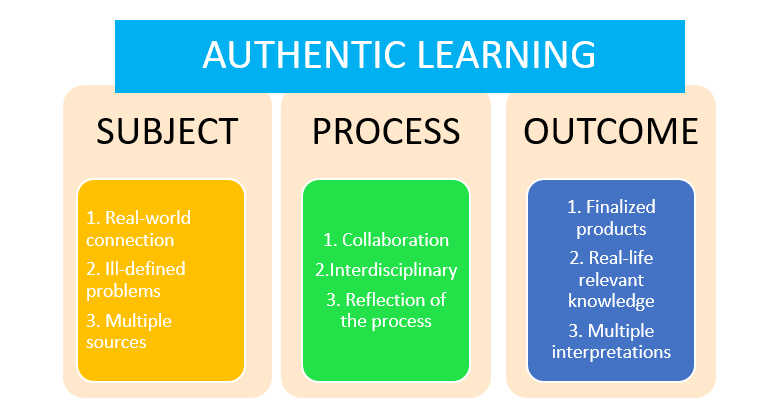
Figure 1. Three elements of authentic learning.
Authentic learning is not something that is or is not in the learning process, but the level of authenticity varies. The learning process can include varying amounts of authenticity factors. If only individual students are asked to evaluate the level of authenticity, as Rossi (2013) suggests, the judgement can be based on their experiences of working life. Nonetheless, at a young age, experiences of working life are usually limited and may include prejudices of how people operate in working life.
If we want to evaluate the authenticity of learning by its linkage to working life, we need to define authentic working life as well. Students can question if an RDI project run by a University is authentic as the operators in the project are mainly University personnel developing and creating fresh concepts and designs relevant to the University. From our point of view, we consider working life at Universities as real as any other working life.
Learning Process according to authentic learning
Normally, the learning process, which includes authentic elements, is not as simple and straightforward as the learning in the classroom. If we want to aim at a simple learning process, one can ask why learning should be authentic. Lombardi (2007) claims that our minds change information into applicable knowledge effectively within authentic learning processes.
The learners will look for connections when adapting new information with personal experience. The authentic learning experience is usually more individual.
Moreover, the new contexts allow the usual concepts or working methods to be aired and opened. In addition, the new social context of learning enables the teachers to see their blind spots and avoid them. The problems raised in authentic learning processes can be controlled by simplifying or refining the working life oriented task.
The student role in authentic learning
Lombardi (2007) suggests that the role of students in authentic learning processes is more or less that of a connection and solution seeker. They have an aim or a task with which working enables building knowledge and skills for them. Then again, the educator designs appropriate structures where guidance, check-ups and feedback are repeated.
Moreover, the reflection of learning should be knotted into the learning process. Herrington (2014) suggests using learning diaries or blogs where students explain e.g., their knowledge of the course content, attitudes, feelings and learning strategies as well as connections and co-operation with other students.
Problem-based learning
Another pedagogical method where real-life challenges are addressed is problem-based learning (PBL). PBL is a learning strategy, or philosophy, or even method (Poikela, E. & Poikela, S. 2006) that universities of applied sciences can use, when cooperating with respective industries.
In this paper, we use the PBL cycle to describe the process the students experienced during the commissioning. The PBL cycle, or PBL process, is divided into a number of different steps, according to literature (e.g., Poikela, E. & Poikela, S. 2006; Poikela, Vuoskoski, & Kärnä, 2009; Schmidt, Rotgans, & Yew 2019):
1. Introduction of problem
2. Brainstorming/Discussion on solutions for the problem
3. Work in student teams, focusing, drafting
4. Feedback session and/or learning needs
5. Student teams continue independent work
6. Presentations of results
7. Feedback
Different models are used to describe this activity-oriented pedagogy, and we do not suggest that our description is in any way covering all, but for heuristic purposes we suggest that frameworks often follow a pattern similar to this:
- Introducing a problem or a scenario to groups of students. The problem or scenario (below: only ‘problem’) must be complex enough to be both interesting for the learners and to enable meaningful work with the rest of the process. The problem should also at least derive from the industry. Poikela, Vuoskoski, & Kärnä (2009) describe the problem as work-related and carefully designed for the studying purposes. Yew & Goh (2016) point out that the students should have adequate prior knowledge of the topic of the problem.
- After having been introduced with the problem, the group of learners brainstorm in order to both understand different aspects of the problem, and to get an idea about the possible ways of solving it. Also, shared understanding about the problem is created. Learning goals, or similar, may be formulated. (Poikela, Vuoskoski, & Kärnä, 2009)
- Then follows some kind of research – either individual or possibly supported e.g. by experts giving lectures or similar. Lectures in this process are a learning resource comparative to literature and exercises – customized to the problem and the phase of the process. (Poikela, E. & Poikela, S. 2006) Depending on the information seeking skills, the students may need guidance for finding and evaluating resources (Poikela, S. & Portimojärvi 2004.).
- And, finally, the new knowledge is applied on the problem, or, a “solution” is presented (Poikela, E. & Poikela, S. 2006). The process can then be repeated, if necessary or if new, e.g., underlying problems arise.
The order of the different stages in the cycle comes naturally and for the teacher it is more important to consider how to introduce and conduct the different stages.
After having finished the cycle, it is of course possible to repeat parts of or the whole cycle again. The problem is however not presented again.
Authentic learning and PBL in the IRM-Tool project
The IRM-Tool project lasted two years and the student involvement begun after a short planning period. From the student perspective, the project was new: they had not participated in its application phase nor the planning of the project execution.
Altogether there were seven different student groups involved in the project as well as some individual students who complemented their elective projects in the IRM-Tool project. The students were studying in the field of media, the focus of the studies being media management, advertising, film or journalism.
The studies linked to the IRM-Tool covered parts of their elective courses or modules, being case examples. Individual students participatedin one or two courses or modules connected with the IRM-Tool project. The course subjects, their connection to the IRM-Tool project and students are introduced in Table 1. below:
Table 1. The courses connected to the IRM-Tool project
| The course | The students | Connection to the IRM-Tool project |
| Scriptwriting module |
Film and animation | Content to Innovationtool.fi |
| Short film module |
Film and animation | Content to Innovationtool.fi |
| Infographics module |
Advertising and journalism | Content to Innovationtool.fi |
| Online Event Concept part of a course |
Media management | Inspiration and assistance to projects’ online workshops |
| GIF animations part of a course |
Animation | Content to Innovationtool.fi |
| Video Production module |
Advertising | Presenting the
IRM-Tool project |
| Direct Marketing part of a course |
Advertising | Launching Innovationtool.fi |
| Graphic Design project |
Advertising | Content to Innovationtool.fi |
| Web Design project |
Advertising and media management | Design and building the web page |
Most of the courses connected with the IRM-Tool project were more specifically connected to the website innovationtool.fi, which explains the theoretical backgrounds of innovation work and introduces innovation workshop methods, guidelines and ideas. The web content offers inspirational materials for maritime industries and creative field experts in their innovation work.
As Table 1. (above) indicates, the same student groups did not participate in the IRM-Tool project from the beginning to the end and therefore none of the students had a broad overview of the whole project. On the contrary, the individual student groups or students had a precise, preliminarily defined task, connected to the IRM-Tool project. The definitions were planned and discussed by us and responsible professors before the courses started.
Authentic learning and the IRM-Tool project connected courses
To reflect on how authentic the learning in courses connected to the IRM-Tool project , modules and projects was, it is useful to return to Figure 1. which presents the subjects, processes and outcomes of authentic learning.
First, we ask if the subjects are connected to the real world, with undefined problems and with solutions that demand multiple sources.
Second, we discuss the collaboration and interdisciplinary aspects of the process as well as if the process included reflection. Lastly, we review the outcome of the learning and the products of the student work.
The subjects and problems of the courses connected with the IRM-Tool project were defined by the project personnel according to the project needs. One of the goals of the project was to produce the Innovationtool.fi web page, and we, as the producer and concept designer of the web page, paid careful attention to identifying separate contents for each course according to the courses’ learning goals and the level of the students’ skills.
We discussed and defined the subjects with the professors who were responsible for the courses in question to meet the course goals and student needs. Even though the authenticity was not primarily in mind at that point, we can state that the subjects were real-world connected: the Innovationtool.fi was to be published openly online and used in real-life environments among maritime and creative fields.
In addition, the launching campaign of Innovationtool.fi actually took place in the project’s social media channels.
Furthermore, we consider the problems given to the students as undefined. While we defined and divided the subjects and aims for different courses, we didn’t give the solutions for how to proceed or achieve the goals. E.g., the problem or goal for the launching campaign course was defined to acquire users from the maritime and creative fields for the Innovationtool.fi site, whereas the means and execution were planned by the students.
The same process was applied in all the courses connected to the IRM-Tool project: we tried to define a problem and aim at a level challenging enough, but did not decide the perfect outcome and were open for several different results.
We can also safely claim that the students needed multiple sources to solve the problems at hand. The sources were partially presented to them when briefing the problem and shared in Padlet boards (Picture 1).
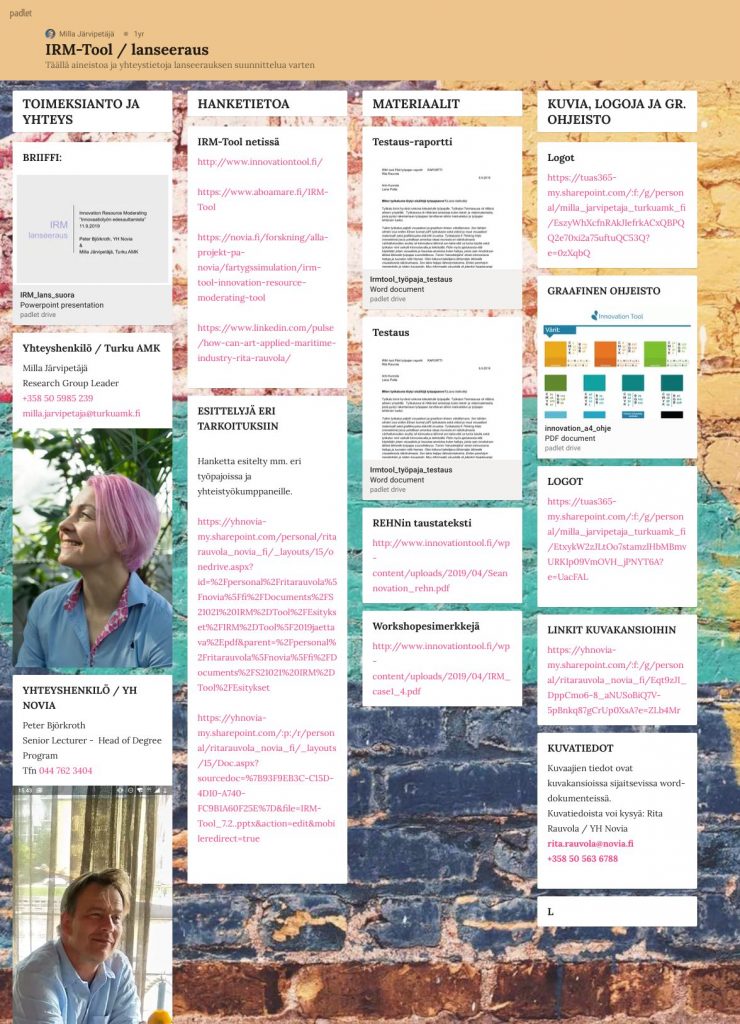
Picture 1. Information board in Padlet to launching Innovationtool.fi.
In addition, the subject specific professors can be seen as sources of the expert knowledge connected to the course contents. E.g., in the GIF animation course, the students were able to ask questions about technical and narrative implementation from an animation expert. Apart from presented and shared sources and expert professors, the students were encouraged to find their own sources while doing their assignments.
Herrington (2014) states that the process in authentic learning includes collaboration, interdisciplinary elements and reflection of the learning process.
In the courses connected with the IRM-Tool project, we did not plan the process totally according to that. Some elements of the courses can however be seen to be in line with authentic learning: the process included collaboration with us, the commissioners of the assignments, as well as working in student teams.
The workflow itself e.g. in short films was equivalent to the workflow of film making in film production companies. Yet, the student teams were not interdisciplinary as such, but the students involved were mainly from the same grade studying the same specific area of media.
We also consider that the learning process could have included more reflective elements: we and the responsible professors gave feedback, and the student teams discussed their assignments together. Nonetheless, the self-reflection of learning was not usually included in the courses as a separate, structured task.
According to Herrington (2014), the outcome of authentic learning should be finalized products, real-life relevant knowledge and multiple interpretations. We believe that the products the students made were finalized: the scripts were final enough to be produced as short films and the films demonstrated professional quality and were published, the infographics (Picture 2.) were included in Innovationtool.fi and so on.
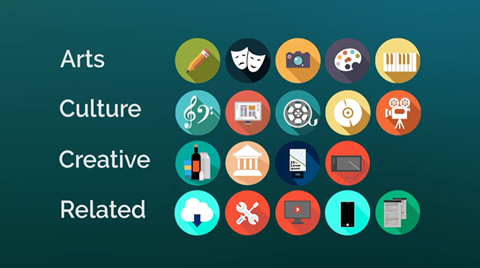
Picture 2. Example of infographics video, screenshot, from Innovationtool.fi.
We also think that the knowledge and skills gained during the courses are relevant in real life. The processes demanded both subject-specific skills (e.g., marketing, graphic design, film editing and concept design) and generic skills important in working life (e.g., teamwork, negotiating and presenting one’s own ideas).
PBL and the IRM-Tool project connected courses
In our project the PBL cycle (see above) was realized, even though we had not planned the activities to fit the cycle. The course began for the students when we presented the idea and need of the IRM-Tool project as well as some theoretical material on innovation and industry for them. Then we specified the assignment to fit the content of the course that the students in question were taking.
Generally speaking, the introduction of the assignments to the students followed the same formula every time: A Power Point presentation, discussion and lastly a presentation of a material bank and sources on a Padlet board with inspirational and visualizing material for the task at hand (Picture 1.).
After that, the students continued their work with the task in the student teams they had formed. The steps described so far cover stages 1–3 in the PBL cycle: Presenting the problem – Brainstorming – Work in student teams. In stage 3, the student teams were indeed, according to PBL cycle, focusing and drafting the solution. E.g., in the Infographics course, the student teams chose one or two themes they wanted to elaborate more: they were given the theme and some examples connected to it but the students narrowed down the elements which they wanted to illustrate.
The following PBL stages 4–5, Feedback session and Student teams continue independent work, were realized in our project as well. Students introduced their drafts or ideas to us and their professors and got feedback how to go on with the work.
Usually, the feedback sessions included visual presentations: e.g., the infographics, web design and drawings were presented to other student groups, project personnel and professors.
The feedback from us, the commissioners of the student work, was mainly targeted to the connection and adaptability of student work and the IRM-Tool project. We wanted to see student work in use, contributing to the project.
Normally, this was not a problem as we wanted to be creative and flexible with the project materials and, moreover, the student groups had an understanding about customer-oriented work. After receiving the feedback, the students were back with their independent work and the experts were at students’ disposal in the classroom when they needed guidance e.g., in technical web solutions or animation.
Nevertheless, the student groups worked mostly independently with versatile sources of information, outside of the classroom, and sometimes needed help from us or their professor when it was not at hand right away.
In our project we can recognize the final PBL stages 6–7, Presentations of results and Feedback of the PBL cycle. However, these two phases were usually combined, and we as well as the professors gave feedback right after the presentations.
The final presentation sessions were special occasions with polished presentations, and we were able to invite other experts from the IRM-Tool project to attend them as well.
As commissioners of the student works, our work with the students ended at the presentation-feedback session whereas the professors and students discussed further the learning processes, assignments and customer-oriented work as well as more technical issues. From the project perspective, the process didn’t end at phase 7, Feedback, but consisted of the inclusion of the student projects in the IRM-Tool project web page, social media or advertising campaign.
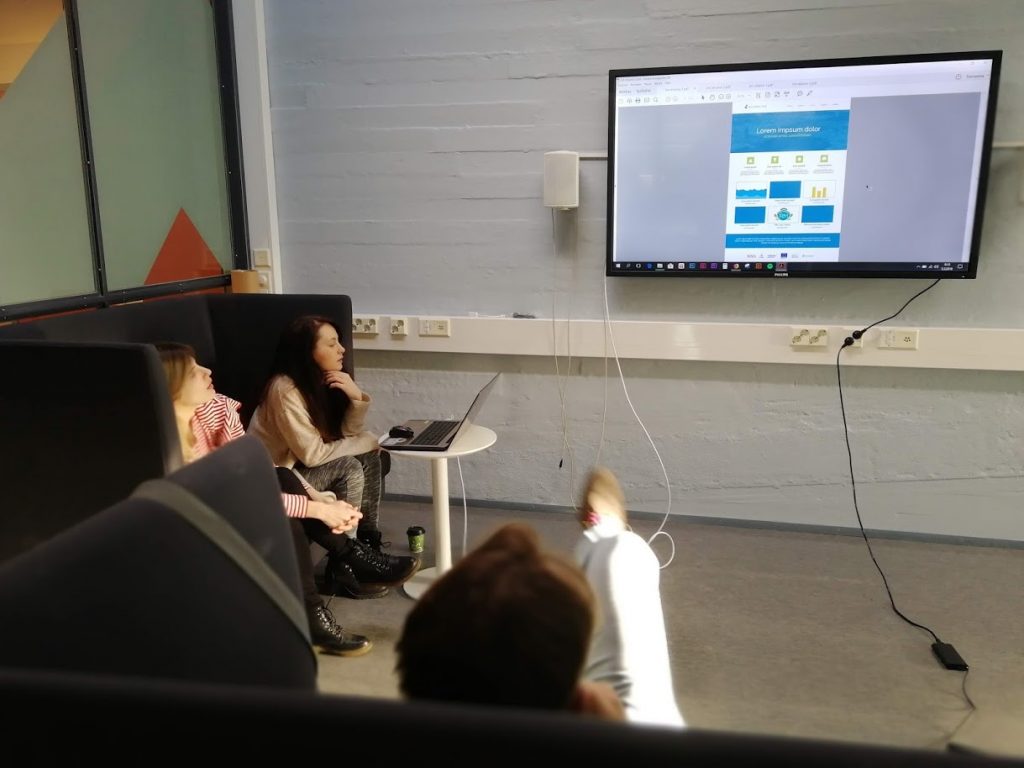
Photo: Milla Järvipetäjä
Picture 3. Students’ and commissioner’s discussion.
Good practices and conclusions
After the IRM-Tool project had finished, we reflected on the processes which involved student participation with the two pedagogical frameworks, authentic learning and PBL. When preparing the commissions, we tried to match learning goals, content, scope and timing of the course in question as well as the level of student groups’ knowledge and skills to the needs and possibilities connected with the IRM-Tool project. We didn’t try to match the presented pedagogical frameworks but as explained above, our work was well in line with them.
Our planning phase included discussions with professors, studying the curricula and study guides. Normally, we presented several types of contents and assignments to professors and in discussion with them decided the most appropriate ones to be included in the course.
The good practice was to do this well ahead: the everyday work at Universities of Applied Sciences is hectic and most of the courses are planned one term prior to the actual occasion.
Also, we found that forming the assignment together with the professors was valuable, as they had the best and most accurate knowledge of the student groups and scope of the courses as well as students’ skills and motivation.
One can wonder if designing the assignments to match the courses will make them less authentic. Working life does not include assignments which are planned to meet a 5-credit scope and a certain level of skills – we can say that working life is more complicated.
When offering students working life type of learning experiences, should the courses be less designed and tailor-made? However, it must be remembered that if the students face tasks which are far too easy or difficult, limited or broad, their motivation might fall. As Yusof, Jamaludin & Hasan (2012) pinpoint, the students’ belief on their ability to perform the task is one of the key factors in motivation.
To conclude, finding a right balance between authenticity and course design is essential and demands flexibility and good co-operation from professors and commissioners. For commissioners, it is essential to know what working with students implies.
We also found that it was very important to be ready to answer students’ questions as they arose.
The students had planned to use certain time slots for their assignments, and should they have open questions, they would not have been able to proceed with the assignments. We tried to tackle questions beforehand by collecting the information into Padlet boards (Picture 1.) and being very clear in briefing the assignments. We can advise other commissioners to focus on clear briefings with commonly discussed goals. Nonetheless, it is important to leave room for creativity and problem-solving.
In our project, when the students worked further, they had more detailed questions, e.g., if their ideas were too wild and stressed overly far from the initial assignment.
Even though we found it important to be reachable and answer the questions quickly enough, it was not always possible due to other duties. Also, we can say that the students could have asked more, especially when we were present in the classroom.
Mainly, we were happy working with the students and especially their creativity positively surprised us.
However, we would like to develop the process from the commissioner’s point of view. For instance, giving feedback at the feedback sessions was sometimes difficult because there was limited time to get to know and reflect on the student work. For future co-operation we would like to recommend getting to know the student work before the actual presentation-feedback session.
Also, discussing with professors about the correct scope of the feedback is recommended: it can be too late or impossible to influence some of the solutions made by students and therefore the feedback should focus on the areas still in progress.
Lombardi (2007) suggests that student motivation is strong in authentic learning processes. In addition, PBL is said to enforce intrinsic motivation and engagement over traditional lecture formats through increasing student responsibilities in their own ways of working (Fukuzawa et al 2017). Nevertheless, we noticed that not all the students in all courses were highly motivated.
Some students did not complete the course or did not hand in all the assignments. This can be explained by other factors than motivation as well; they may have been busy with other courses or had other excuses.
The orientation to the IRM-Tool project’s themes was sometimes demanding, and some frustration could be noticed, especially when the students were starting their assignments. Students’ personal interests and the project’s framework possibly did not meet in all cases.
However, a positive atmosphere, feedback and open discussions are something to strive for to foster motivation and successful results also from the commissioners’ point of view.
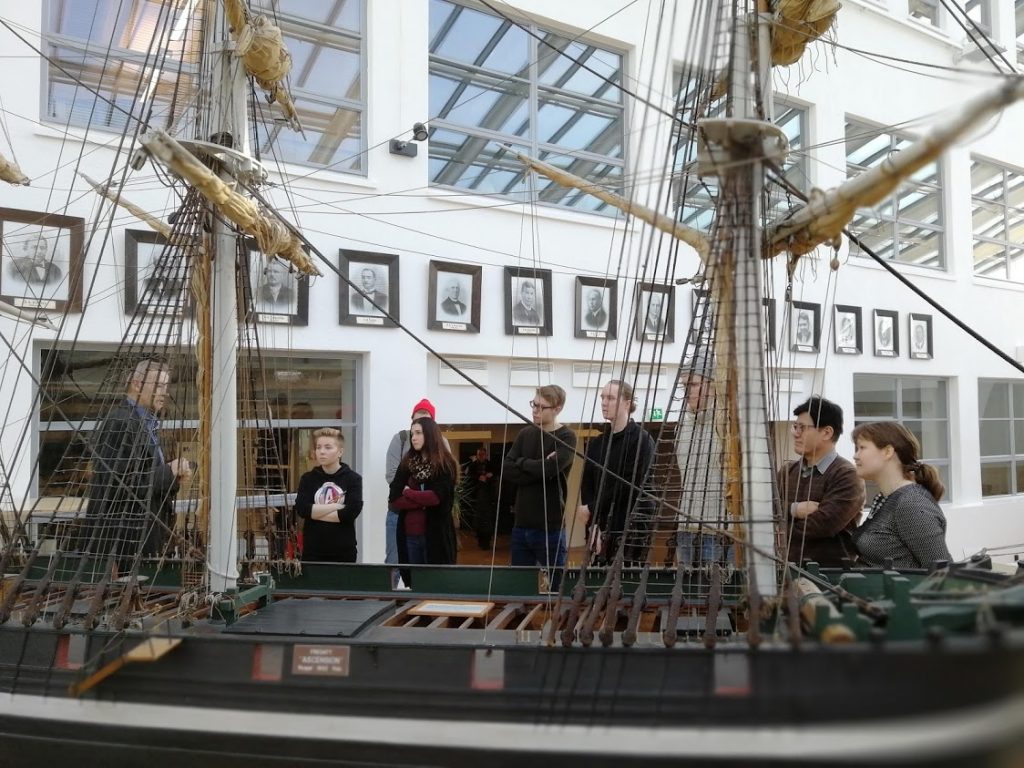
Photo: Milla Järvipetäjä
Picture 4. Students visiting the IRM-Tool project’s home base, Aboa Mare.
References:
Fukuzawa, S. & Boyd, C. & Cahn, J. 2017 Student Motivation in Response to Problem-based learning. Collected Essays on Learning and Teaching 10:175
Harun, N.F., Yusof, K., Jamaludin, M.Z., & Hassan, S. 2012. Motivation in Problem-based learning Implementation. Procedia – Social and Behavioral Sciences, 56, 233-242.
Herrington, J., Oliver, R. & Reeves, T.C. 2006. Authentic tasks online: A synergy among learner, task and technology. Distance Education. Vol. 27, No 2, 233–248.
Herrington, J. & Parker, J. & Boase-Jelinek, D. 2014. Connected authentic learning: Reflection and intentional learning. Australian Journal of Education. Vol. 58, No. 1, 23–35.
Herrington, J., Reeves, T.C., & Oliver, R. 2010. A guide to authentic e-learning. London and New York: Routledge.
Innovation Tool. Available (9.3.2021): http://www.innovationtool.fi/
IRM-Tool, Innovation Resource Moderating Tool project presentation. Available (9.3.2021): https://www.aboamare.fi/IRM-Tool
Konst, T. & Kairisto-Mertanen, L. 2018. Innovation Pedagogy – Preparing Higher Education Institutions for Future Challenges. Course material from Turku University of Applied Sciences 115.
Lombardi, M. 2007. Ed. Oblinger, D. Authentic learning for the 21st century: An overview. ELI Paper 1: 2007.
Poikela, E., & Poikela, S. 2006. Problem-Based curricula: Theory, development and design. In E. Poikela & A. R. Nummenmaa (Eds.), Understanding Broblem-Based learning (pp. 71–90). Tampere: Tampere University Press.
Poikela, S & Portimojärvi, T. 2004. Opettajana verkossa – ongelmaperustainen pedagogiikka verkko-oppimisympäristön toimijoiden haasteena. Tampere University Press.
Poikela, S., Vuoskoski, P., and Kärna, M. (2009) ‘Developing creative learning environment in problem-based learning’, in Tan, O. S. (eds.) Problem-based Learning and Creativity, Cengage Learning, Singapore, pp.67-85.
Rossi, J. (2013) ”Natural, unmodified, meaningful, motivating and real”: authentic learning materials and authentic learning defined by teachers and teacher students. Master’s Thesis. University of Jyväskylä. Department of Languages.
Schmidt, H., Rotgans, J. & Yew, E. H. J. 2019. Yew Cognitive Constructivist Foundations of Problem‐Based Learning. in Moallem, M., Woei, H. & Dabbagh, N. 2019. The Wiley Handbook of Problem-Based Learning. John Wiley & Sons, Incorporated, 2019.
Universities of Applied Sciences Act (932/2014). Available: https://finlex.fi/en/laki/kaannokset/2014/en20140932_20160563.pdf
Yew, E. H. J., & Goh, K. (2016). Problem-Based Learning: An Overview of its Process and Impact on Learning Health Professions Education, 2(2), 75–79.







